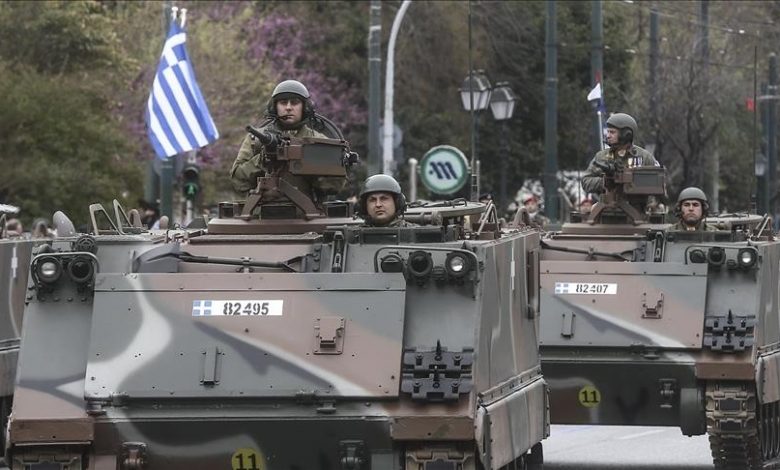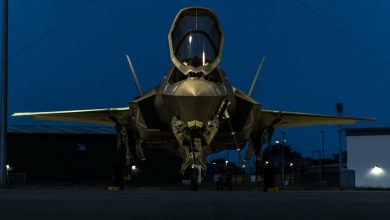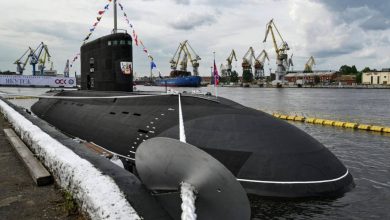Analysis: Greek defense spending: Costs and beneficiaries

It’s hard to say how much of Greek defense spending relies on real demand pull, but it’s mostly guided by supply pushers from inside Greek bureaucracy linked with international defense companies
Military expenditures in Greece rose to $8.4 billion in 2021 from $5 billion in 2019 according to Stockholm International Peace Research Institute (SIPRI) reports in 2022.
Whether that amount of defense expenditure is sustainable or not, Greece keeps on spending $730 per person, which is 3.76% of Greece’s gross domestic product (GDP) [1].
Greece is followed by the US with 3.47% and Poland with 2.42%.
In 2020, the budget deficit was -10.1% of GDP (EU average: -6.9%), while in 2021 the deficit was -7.6%. In the meantime, public debt surged from 180.7% of GDP in 2019 to 206.3% in 2020 (the highest in the European Union).
Greek Finance Minister Christos Staikouras recently announced that payments for defense system acquisitions rose from €515 million in 2020 to nearly €2.5 billion in 2021 and will rise further to €3.4 billion in 2022. Actual deliveries for the years 2022-2028 will total €11.5 billion, or an average of over €1.6 billion annually, from about €500 million in recent years [2].
Who are the beneficiaries of Greek military spending?
In order to have a better understanding, we should know what, and also from where Greece procures military equipment and weapons. Greece procures a wide range of complex defense systems in order to modernize its armed forces and to boost their army potential in accordance with anticipated threats.
Greece signed deals to buy 3 Belharra (Belh@rra) navy frigates and 24 Rafale fighter jets from France
Some of those 24 Rafale fighter jets will be brand new, while others will be delivered as used jets. The Rafale fighter jets will be sold to Greece by Dassault Aviation and so far the Air Force fleet has already been delivered the first eight Rafale jets.
By the summer of 2023, 18 Rafale jets relating to the first contract will be fully deployed in Greece, and the remaining six fighter jets will be delivered to Greece no later than summer of 2024.
Greece will pay for 24 Rafale fighter jets nearly $3 billion in the next two years [3]. These three frigates will be equipped with Sea Fire radar systems. According to the project timeline, the three navy frigates will be delivered to Greece between 2025 and 2027.
It is understandable that France’s defense industry enjoys Macron’s backing of Athens’ foreign policy and that policy produces many lucrative contracts for France.
If we take into consideration that many French companies together with their US and German counterparts are in Greece for 45 years, it would be understandable that Greece procures different complex weapon systems from these countries.
US
Greece will also upgrade 83 F-16 fighter jets to the VIPER configuration in the next coming five years. That project is expected to be completed by 2027. The amount of the project is expected to be $1.5 billion, which is included in Greece’s 35-year procurement plan and a part of the $10 billion F-16 program [4].
At the end of 2021, the US State Department has also approved a possible foreign military sale to Greece for the modernization of four MEKO-class frigates at an estimated cost of $2.5 billion. We should remember that the US has $11.29 billion in active government-to-government sales cases with Greece under the foreign military sales system.
According to a US State Department October press release, here is the list of possible and current contracts with Greece; upgrade of 83 F-16 aircrafts to “V” configuration, the purchase of seven MH-60R Seahawk helicopters, and a modernization package for the Navy’s 11 S-70B Aegean Hawk helicopters.
In addition to its F-16 V upgrades, the Air Force is planning to procure fifth-generation fighter aircraft and remotely piloted aircraft (RPA). The Army plans to acquire assault amphibious vehicles (AAV) and to upgrade its long-range precision fires, air defense, and its attack and utility helicopter fleets. The Navy plans to upgrade its MEKO-class frigates and will soon be receiving four US Coast Guard Island Class patrol boats via the Excess Defense Articles (EDA) program.
According to the same US State Department press release, Greece, since 2017, has received more than $282 million worth of military equipment through the EDA program, including 1,200 U.S. Army M-1117 armored security vehicles, 70 OH-58D Kiowa Warriors, 10 CH-47 Chinook helicopters, four Mark V Special Operations Craft, and four island class patrol boats.
German defense industry
The Greek Army mostly uses German Leopard Main Battle Tanks and howitzers such as PzH 2000. In an interview with Greek daily Kathimerini, Greek Defense Minister Nikos Panagiotopoulos was heralding decisions for new corvettes and upgrading Leopard main battle tanks.
For the acquisition of German submarines, in 2000 the Greek government signed a deal with Howaldtswerke-Deutsche Werft (HDW) and Ferrostaal for three new U-214 submarines and later exercised an option to purchase another. The €1.26 billion contract, however, was later found to have been made possible with €100 million in bribes paid out to Greek defense officials and various consultants [5]. Despite the scandals in Greece, German submarines are still on the agenda of Greece to be purchased.
Israeli defense industry also active in lucrative Greek weapons market
The Greek Defense Ministry has signed a collaboration agreement with Israel for the establishment of a flight school for the Greek Air Force, which includes 10 Leonardo M-346 Lavi aircraft for the training of Greek pilots, and also the purchase of simulators and other logistical support elements. The agreement amounts to almost €1.7 billion and will last for two decades. The flight school will be built and maintained by the Israeli company Elbit Systems, having been selected in the international bidding process carried out by Athens [6]. The upgrading of the Greek Air Force’s T-6s by the same Israeli company is also envisaged. Under this agreement, Greece is reinforcing the training of its pilots.
Supply push versus demand pull
It is hard to say what percentage of Greece defense spending relies on a real demand pull. Whoever motivates the Greek government for a maximalist policy in the region at the same time gets the advantage from unsustainable defense spending.
By looking at Greece’s baroque arsenal style, one can easily conclude that Greek procurement methods are mostly guided by supply pushers from inside the Greek bureaucracy and politicians linked with international defense companies.
Baroque arsenal for Greek citizens
Security is like beauty; it is relative and differs for every country. The security concerns of the US and Niger are not the same, so the security concerns of Greece are not the same as Türkiye’s. In this regard, it is important to know who defines the security concerns of Greece. Do the authorities including the Greek government and legislative body define the real threat and needs or are these bodies being manipulated?
It is clear that France is the biggest beneficiary of Greek defense spending, followed by US, Germany, and Israel. So, it is understandable why French authorities make frequent statements which provokes a feeling of insecurity in Greece. But what about the cost of that “supply push” over Greece? A Greek citizen pays more than $700 for military spending every year. For a family of four, that amounts to almost $3,000. Adding to that, those expensive and complex weapon systems have a lifetime cost which is far more than their purchase prices, which are paid by Greek taxpayers.
If all these systems are just for creating a baroque style arsenal then it is waste of taxes collected from taxpayers. Adding to that taking into consideration the public debt of Greece, its demography and current industry, the above-mentioned defense spending is not sustainable for Greece either.





